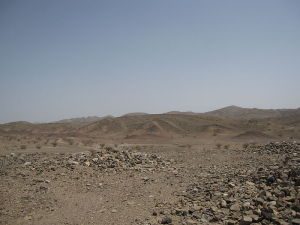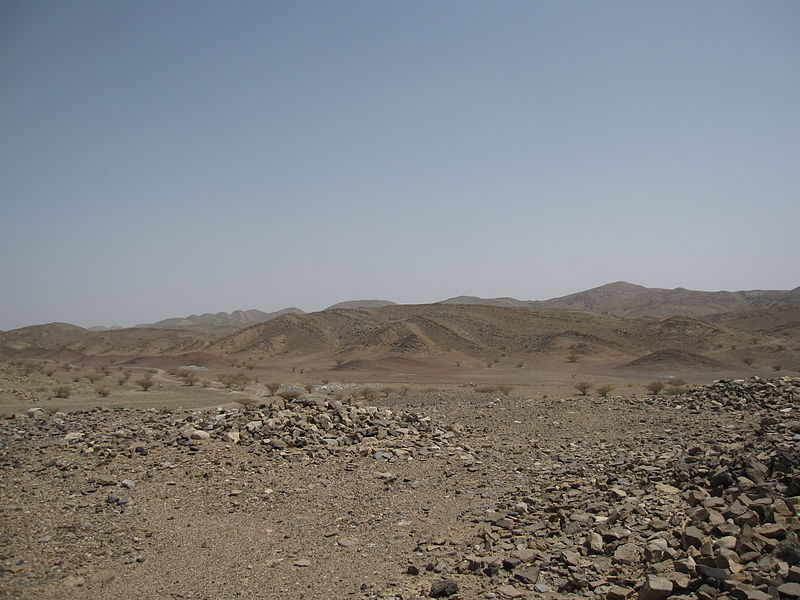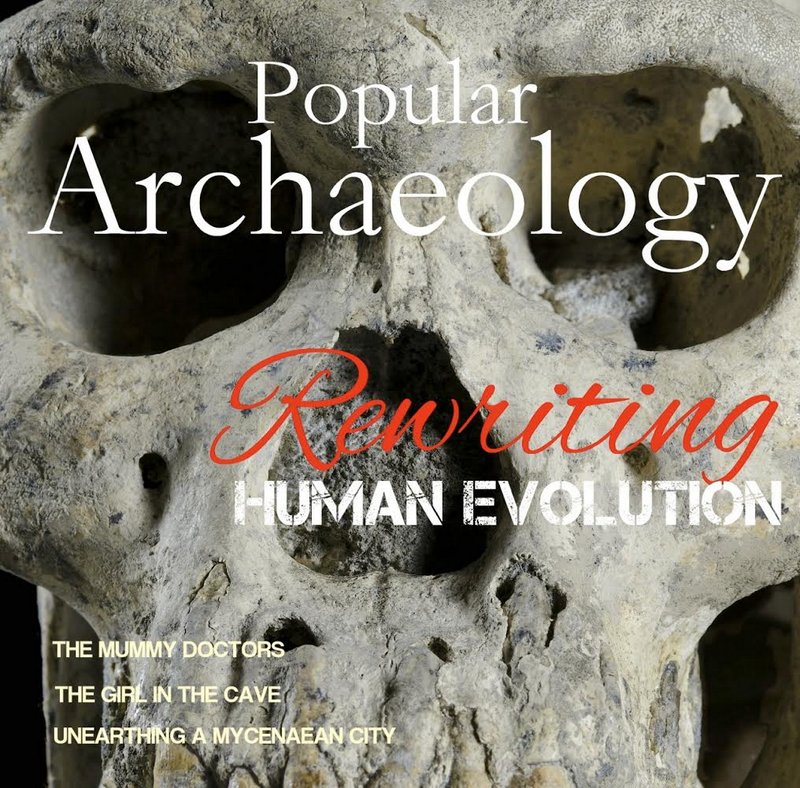
Much is still unknown about these people who once occupied present-day northeastern Oman about 5,000 years ago. They left no written records, at least none that have been found to date. They made up what scholars and historians have referred to as the ancient Magan civilization.
“The people of Magan did not use writing or glyptic arts to record their history or organize their societies, so we know very little about their way of life,” write Christopher Thornton, Charlotte Cable and colleagues about the ancient society.* Discovering more about it must be left to the tools and methods of archaeology.
Thornton, a consulting scholar at the Penn Museum, has been co-directing the Bat Archaeological Project since 2007. Bat, the focus of investigations under the Project, is a settlement identified with the Magan civilization. The site is a UNESCO World Heritage Site located in the interior of the country. It features a large Bronze Age cemetery and other evidence of 3rd millennium BCE settlements near large, circular structures called “towers”, which have been the subjects of their excavations from 2007 to 2012. But in 2013, they shifted to exploring a series of Bronze Age domestic structures, including 3rd millennium BCE structures excavated in 2014 that give clues to the transition from an early agricultural settlement to a developed center for trade and production.
“Bat is unusual in eastern Arabia for its relatively deep stratigraphic sequence (1-3 meters), in which earlier houses are overlain by later houses,” state Thornton and colleagues in a summary brief. “While common in other regions of the world, Bat has the potential to provide the first radiocarbon-dated stratigraphic sequence of the 3rd millennium BCE on the Omani Peninsula, and our first glimpse of settlement evolution in the Bronze Age of this area.”**
Bat, along with the sites of al-Khutm and al-Ayn, are thought by scholars to be ancient centers that traded extensively with Mesopotamia between 3000 and 2000 BCE. Sumerian cuneiform texts make reference to Magan as a major source of copper and diorite in 2300 BCE, describing ships with cargo capacities of 20 tons journeying up the Arabian Gulf, stopping at ancient Dilmun along the way. They also record Indus Valley merchants and others traveling to Magan. Research in this area of Arabia has identified large copper deposits, in addition to more than 150 medieval smelting sites, reinforcing the notion that the region had the natural resources to suggest that this was, indeed, where ancient Magan was located.
_____________________________________
 Scattered remains of ancient tombs at Bat. Stefan Karsowski, Wikimedia Commons
Scattered remains of ancient tombs at Bat. Stefan Karsowski, Wikimedia Commons
______________________________________
Thornton and Cable plan to return to Bat in 2015 with a team of archaeologists, other specialists and student volunteers to further investigate the domestic structures, in addition to nearby abandoned Late Islamic/pre-Modern mud-brick village structures, working alongside the local community to study how the village spaces were used.
They plan to have the people of the local community assume a significant role in the research, an element that is fast becoming an important trend in archaeological projects and activities throughout the world. “With the conferring of World Heritage (WH) status to the adjacent Bronze Age cemetery and settlement of Bat”, report Thornton, et al., “the people of Bat have increasingly become interested in their own recent history and its meaningful role in the development and articulation of their identity, and are very keen to develop the heritage and tourist potential of the Oasis and site.”**
The Bat project directors are calling for help from students and volunteers all over the world. For more information, see the project field school website.
__________________________________
**http://ifrglobal.org/images/2014/Syllabus/Syllabus-Oman_BAT_2014.pdf
___________________________________
Just released!
The special new premium quality print edition of Popular Archaeology Magazine. A beautiful volume for the coffee table.
Travel and learn with Far Horizons.
Read about the most fascinating discoveries with a premium subscription to Popular Archaeology Magazine. Find out what Popular Archaeology Magazine is all about. AND MORE:
On the go? Get the smartphone version of Popular Archaeology as an app or as an ebook.
Popular Archaeology’s annual Discovery Edition eBook is a selection of the best stories published in Popular Archaeology Magazine in past issues, with an emphasis on some of the most significant, groundbreaking, or fascinating discoveries in the fields of archaeology and paleoanthropology and related fields. At least some of the articles have been updated or revised specifically for the Discovery edition. We can confidently say that there is no other single issue of an archaeology-related magazine, paper print or online, that contains as much major feature article content as this one. The latest issue, volume 2, has just been released. Go to the Discovery edition page for more information.








